Archive
Commodore CHESSmate
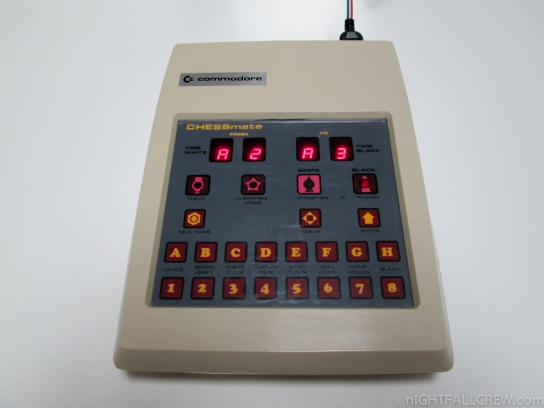
Autopsy:
from Secret Weapons of Commodore homepage:
Introduced CES 1978
Hardware 6504 CPU (28-pin 6502, 8K addressable memory, on-chip clock, IRQ line only) @ 1MHz, 6530 RIOT (64 bytes RAM, 1KB ROM, 2 I/O ports, 8-bit timer), 6332 ROM. Two ROM sockets; the 6332 is occupying only one of them. The 6504 is socketed; the remainder are soldered directly to the board.
Graphics and Sound If you can call it that. Four 7-element LED displays for the timers and four dome indicator LEDs. Piezoelectric beeper.
Eventual Fate Released summer 1978 in USA, UK and West Germany.
This chess machine is an 22 x 16 x 5cm (rear, approximately 8 x 6 x 2 inch; front is 3.5cm/1.2 inches high) machine, off-white (similar to early VIC-20s), with a dark brown base. The 7-element LEDs are in groups of two, one labeled “FROM (Time white)” and the other “TO (Time black)”; the four dome LEDs are labeled “Check”, “CHESSmate LOSES”, “CHESSmate IS PLAYING WHITE” and “CHESSmate IS PLAYING BLACK”.
The “keyboard” is a membrane setup (similar to the Sinclair ZX-80) with 19 keys (A-H, 1-8, NEW GAME, CLEAR, ENTER), but only 11 matrix lines (A-H and 1-8 share lines). A-H are also, respectively, labeled WHITE, BOARD VERIFY, CHESS CLOCK, DISPLAY TIME, STOP CLOCK, SKILL LEVEL, GAME MOVES, and BLACK. The rear plate reads: “Commodore International Limited / Power supply: AC adaptor model C160 / Power rating: AC 10V 600 mA / CHESSmate, 201490 01, made in Hong Kong / CAUTION: DO NOT OPEN MACHINE. UNAUTHORIZED SERVICE VOIDS WARRANTY.” This is printed in English, French and German. On the internal view, the ICs are, from left to right, the 6530 RIOT, the 6332 ROM (next to the empty socket for the option ROM), and the 6504.
The Chessmate was developed by Peter Jennings, the original author of KIM-1 Microchess, under contract to Commodore in 1977. The Chessmate’s hardware is in fact based on the KIM-1, but the ROMs are of course filled with Microchess 1.5, not the KIM’s monitor. This was the same version released for the PET; the empty ROM socket on Martijn’s board was intended primarily for upgrades to the chess program. The keyboard mapping is dissimilar to the KIM as well; some of the ports were actually used for sound, and Commodore made some rearrangements to the unit for ease of manufacture after Peter released the unit to them. While simultaneously released in the USA, UK and West Germany, it was significantly more popular in the latter country than in the others (presumably due to greater interest in chess there). Peter received a royalty for each unit produced, and still owns a first-production Chessmate (sadly non-functional) and the original KIM-1 used to create Microchess and develop the Chessmate’s custom version.
As mentioned, the Chessmate has very different ROMs from the KIM-1, and part of this difference extends to the RIOTs. The 6530 and 6532 RIOT “ROM, I/O and Timer” chips, a series of custom multifunction chips developed by MOS Technology, were designed as integrated-design cost cutters, reducing the chip count on the board as it gave the functionality of several chips and didn’t cost much more to manufacture than a regular ROM. Unfortunately, this has one important consequence: RIOTs are rarely transferable between units, because of differing CS logic between models, differing ROM contents, and some versions use fewer CS lines to get additional I/O lines.
This means that the RIOT you find in your Atari 2600 (yes, VCSes have Commodore-designed chips!) is not swappable with the RIOT you would find in a Chessmate, or in a KIM-1; even the KIM-1 by itself is bad on this point, since it had several revisions alone (my unit is Revision D). Martijn’s Chessmate has a RIOT labeled “6530 024 3279″, meaning produced on the 32nd week of 1979; this is one of the last 6530 RIOT production runs known, unfortunate because the later MOS 6532 RIOT is not pin-compatible with the 6530. The “24″ is also worrisome: this means there are no less than 24 6530 RIOT versions floating around in various units, and to the great despair of anyone wishing to repair a moribund representative of these intriguing units, virtually none of them are compatible with any other.
Download:
Video:
source: floodgap.com/retrobits/ckb/secret/
Repairing & Cleaning a Commodore CBM 610
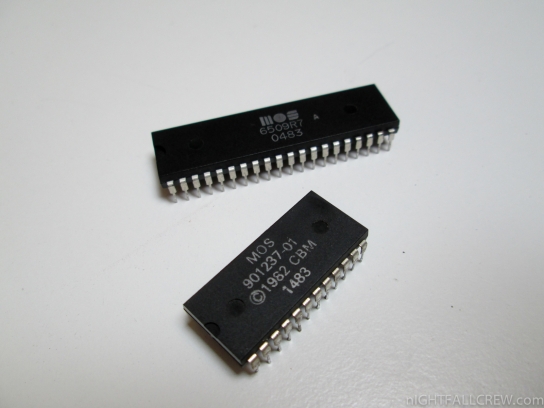
This gallery shows some stages of the cleaning and repairing the Commodore CBM 610.
Defects found on the Commodore CBM 610:
- Black Screen of Death.
- Garbage characters on the screen.
- Keyboard Yellowed.
- Filter capacitor exploded.
The black screen of death was fixed by replacing the CPU MOS 6509A and the problem of garbage characters on the screen was fixed by replacing the ROM characters with a EPROM 2532 suitably programmed.
The yellowed keyboard was replaced with a new one in good condition of the Commodore CBM 710. I like Commodore. What will be the difference of a CBM 710 and a CBM 610 keyboard? nothing, are the same! no! on the keyboard of the CBM 710 has two wires reversed! (brown/red) ;-D
The filter capacitor exploded has been removed.
Commodore CBM 610
Autopsy:
from Wikipedia:
The Commodore CBM-II series was a short-lived range of 8-bit personal computers from Commodore Business Machines (CBM), released in 1982 and intended as a follow-on to the Commodore PET series.
The CBM-II had two incarnations, the P series (P = personal, or, home use) and the B series (B = business use). The B series was available with a built-in monochrome monitor (hi-profile) with detached keyboard, and also as a single unit with built-in keyboard but no monitor (lo-profile). These machines were known as the “Porsche PETs” for their unique styling.
The P series used the VIC-II 40-column color video chip like the C64. It also included two standard Atari-style joystick ports. The 6509 CPU ran at 1 MHz in the P series due to the use of the VIC-II chip.
The B series used a 6545 CRTC video chip to give an 80-column “green screen” monochrome output more suitable for word processing and other business use than the VIC-II’s 40-column display. Most models have the Motorola 68B45 installed which is a pin compatible variant rather than the MOS 6545A1 2 MHz part. On the B series the 6509 CPU ran at 2 MHz.
Features common to both the P and B series included an MOS Technology 6509 CPU, an enhanced version of the venerable 6502, that was capable of addressing up to 1 megabyte of RAM via bank switching (however, no CBM-II model came with more than 256 kilobytes of RAM, 1/4 megabyte). The sound chip was the 6581 SID, the same one that was used in the popular Commodore 64 (C64) but with some limitations as it was over-clocked to 2 MHz. Additionally, the CBM-II had an industry-standard RS-232 serial interface and an IEEE-488 parallel bus (for use by disk drives and printers) just like the PET/CBM series. The CBM-II’s built-in operating system used an enhanced version of CBM BASIC version 4.0.
An optional Intel 8088-based coprocessor board allowed the CBM-II series to run CP/M-86 1.1 and MS-DOS 1.25; however, the computers were not IBM PC compatible and very little, if any, software taking advantage of this capability ever appeared. The coprocessor board only ran on hi-profile machines due to power supply and mechanical spacing requirements.
The production naming within the United States and Canada was the B128/B256 and CBM128-80/CBM 256-80 while in Europe they were known as the 600 and 700 series respectively (no “B” in front of the model number). The P machine was known worldwide as the 500 series. There are prototype models though such as the B500 (earlier B128 design) and B700 (earlier CBM 128-80/CBM 256-80 design) known to exist.
Due to the popularity of the C64, the P series was cancelled in the United States before it could be officially released; however, a few dealers who received preproduction units sold them. As these computers had not received approval from the Federal Communications Commission, this caused legal problems for Commodore. The units were recalled and destroyed, but a very small number exist today, in private collections. At least one model, the P500, was commercially released in Europe but only sold in small numbers.
source: wikipedia
Memotech MemoPack 16k for Sinclair ZX-81
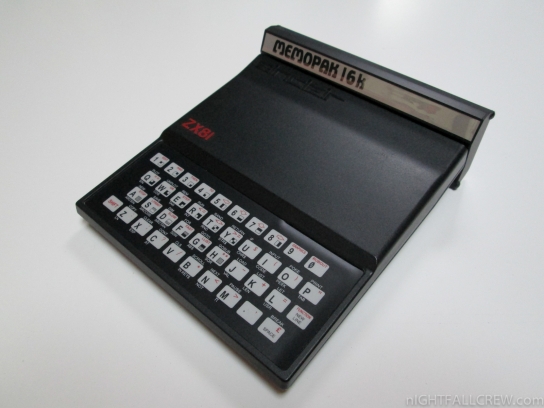
Autopsy:
The Memotech Memopack is a 16K RAM Expansion Pack for Sinclair ZX-81.
This version of the MEMOPAK 16K is fully compatible with either the Sinclair 16K or another MEMOPAK 16K; or a MEMOPAK 32K; or you can work with it just by itself.
TIPS: The default switches for the Master Position are: (Off, On, On, Off).
Download: Memotech Memopack Manual (1535)
Analysis & Repair of two Floppy Drives Commodore SFD-1001
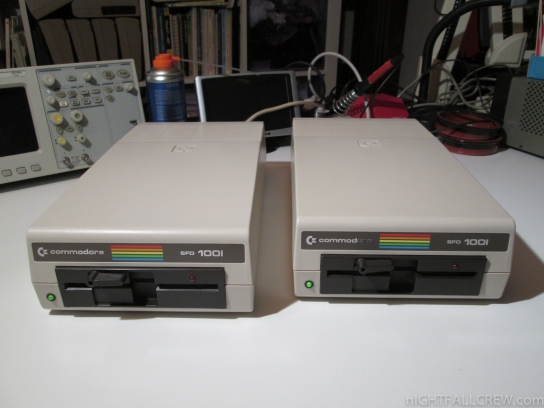
This gallery shows some stages of the repairing of the two Floppy Drives Commodore SFD-1001.
Defects found on the two Floppy Drives:
- Both floppy drives had the capacitors that leaked acid on the motor control pcb.
- Both floppy drives had the closing arm cracked.
The difficulty was rebuild the tracks of the pcb and remove the most of the leaked acid of the capacitors. Unfortunately on the aesthetic level this type of repair are not perfect, but i’m glad that now work.
To test the correct operation of the Floppy Drives i have used a Commodore CBM (PET) 2001, and a Commodore CBM 610.
Commodore Floppy Drive SFD-1001
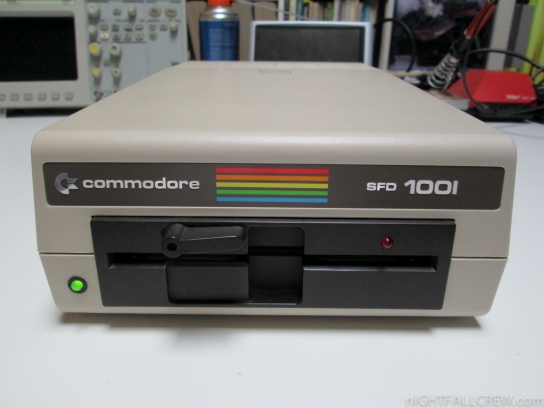
Autopsy:
from C64-Wiki Homepage:
The Commodore disk drive SFD-1001 was build in 1984/85. It has got a storage capacity up to 1 MByte (1.066.496 bytes equals 4166 blocks, ca. 4100 useable) for 5,25″-disks and it has got a IEEE-488 interface.
The data transfer is parallel. Also it is 5-times faster (ca. 1500 bytes/s) than the floppy VIC-1541. It can also used on CBM-PETs and with the right connector (cartridge) on C64/128, too.
The disk drive has build in the Commodore-DOS 2.7 version.
Download: 8250LP (SFD-1001) Disk Drive Technical Manual (1572)
source: c64-wiki.com
Commodore 64 CP/M Z-80 Cartridge
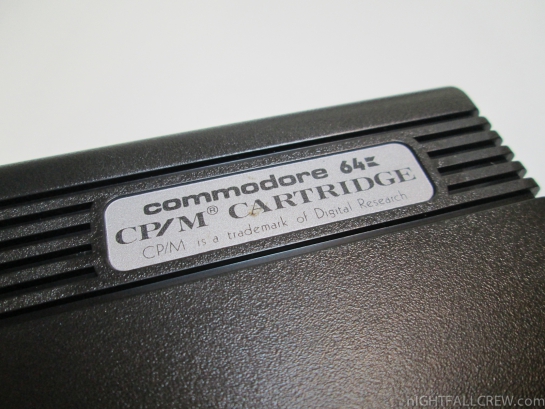
Autopsy:
from MOS6502 Homepage:
The idea of running the multitude of CP/M software on your Commodore surely was one of the drivers for people to invest in the C128. But what about that obscure CP/M cartridge, containing of course the Z80 CPU (running at 3MHz), that Commodore released for the C64 in 1983? Did this introduce CP/M for the classic Commodore computer?
At least in theory, the cartridge would open up the world of CP/M to the C64 user, but 1541 disk drive incompatibilities made it next to impossible to run CP/M software on the home computer. A disk of, let’s say an Apple (CP/M) would simply not run and only produce a “Bad Track” or “Bad Sector” error.
Commodore quickly stopped manufacturing these cartridges and Commodore users had to wait till the C128 before they could really start playing around with CP/M So was the CP/M cartridge a complete waste? Surely there would be some “proprietary” Commodore CP/M software for the C64? The answers are “no” and… “no”.
This may seem a bit contradictory but there was one neat little trick that you could do to actually run the CP/M programs out there and it didn’t involve the incompatible disk drive: you had to utilize the user port to transfer CP/M software from another machine… talk about some workaround!
Download: Cartridge Schematic & Manual (1597)
source: mos6502.com
Commodore P500 (PET/CBM-II) pre-Production Prototype
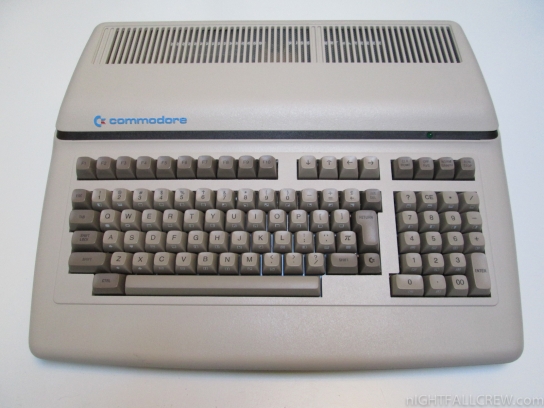
Autopsy:
I have received this computer to be repaired for a friend with a classic startup fault; the Black screen of Death.
After careful analysis of the problem and thanks to Alessandro Polito for the test, the failed component was the CPU 6509.
from Wikipedia:
The Commodore CBM-II series was a short-lived range of 8-bit personal computers from Commodore Business Machines (CBM), released in 1982 and intended as a follow-on to the Commodore PET series.
The CBM-II had two incarnations, the P series (P = personal, or, home use) and the B series (B = business use). The B series was available with a built-in monochrome monitor (hi-profile) with detached keyboard, and also as a single unit with built-in keyboard but no monitor (lo-profile). These machines were known as the “Porsche PETs” for their unique styling.
The P series used the VIC-II 40-column color video chip like the C64. It also included two standard Atari-style joystick ports. The 6509 CPU ran at 1 MHz in the P series due to the use of the VIC-II chip.
The B series used a 6545 CRTC video chip to give an 80-column “green screen” monochrome output more suitable for word processing and other business use than the VIC-II’s 40-column display. Most models have the Motorola 68B45 installed which is a pin compatible variant rather than the MOS 6545A1 2 MHz part. On the B series the 6509 CPU ran at 2 MHz.
Features common to both the P and B series included an MOS Technology 6509 CPU, an enhanced version of the venerable 6502, that was capable of addressing up to 1 megabyte of RAM via bank switching (however, no CBM-II model came with more than 256 kilobytes of RAM, 1/4 megabyte). The sound chip was the 6581 SID, the same one that was used in the popular Commodore 64 (C64) but with some limitations as it was over-clocked to 2 MHz. Additionally, the CBM-II had an industry-standard RS-232 serial interface and an IEEE-488 parallel bus (for use by disk drives and printers) just like the PET/CBM series. The CBM-II’s built-in operating system used an enhanced version of CBM BASIC version 4.0.
An optional Intel 8088-based coprocessor board allowed the CBM-II series to run CP/M-86 1.1 and MS-DOS 1.25; however, the computers were not IBM PC compatible and very little, if any, software taking advantage of this capability ever appeared. The coprocessor board only ran on hi-profile machines due to power supply and mechanical spacing requirements.
The production naming within the United States and Canada was the B128/B256 and CBM128-80/CBM 256-80 while in Europe they were known as the 600 and 700 series respectively (no “B” in front of the model number). The P machine was known worldwide as the 500 series. There are prototype models though such as the B500 (earlier B128 design) and B700 (earlier CBM 128-80/CBM 256-80 design) known to exist.
Due to the popularity of the C64, the P series was cancelled in the United States before it could be officially released; however, a few dealers who received preproduction units sold them. As these computers had not received approval from the Federal Communications Commission, this caused legal problems for Commodore. The units were recalled and destroyed, but a very small number exist today, in private collections. At least one model, the P500, was commercially released in Europe but only sold in small numbers.
source: wikipedia
Repair two Commodore CBM 8296 with Black screen of Death
These two computers had the classic fault: Black screen of Death.
The first one was repaired by replacing a ram chip (4264) partially interrupted, the other one had One of the two chip PLA dead.
I have to thank my friend Andrea for providing me a motherboard of a 8296 for spare parts, where i have recovered the PLA which i needed.
Amstrad (Schneider) Colour Monitor CTM 644
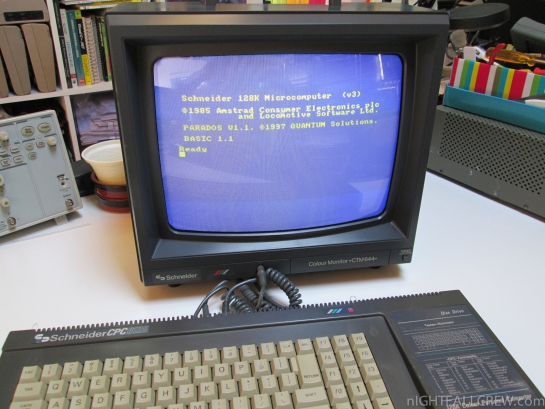
Autopsy:
from CPCWiki:
The Amstrad (Schneider) CTM640/CTM644 are two colour monitors sold together with the classic CPC-computers. Optionally, the computer could have been purchased with GT64/GT65 green monitors. The only difference between the CTM640 and CTM644 models is the additional 12V power supply for the CPC664/CPC6128′s disk drive in the later model.
With the arrival of the CPC664 and CPC6128 models, the existing stock of CTM640 monitors was sold out and later only CTM644 monitors were sold, even with the CPC464. For that reason, the 12V power outlet was designed as a socket for a cable coming from the CPC, while all other connections were made with cables coming from the monitor.
Amstrad (Schneider) Colour Monitor CTM 644 demostration:
source: cpcwiki.eu
Repair Commodore CBM 8250LP Dual Drive Floppy Disk
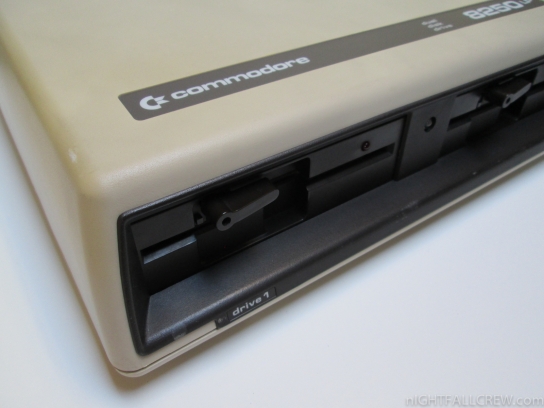
Autopsy:
from Wikipedia:
The Commodore 8050 and Commodore 8250 were dual unit 5¼” floppy disk drives for Commodore International computers. They used a wide rectangular steel case form similar to that of the Commodore 4040, and used the IEEE-488 interface common to Commodore PET/CBM computers.
The 8050 was a single sided drive, whereas the 8250 could use both sides of a disk simultaneously. Both used a “quad” density format storing approximately 0.5 megabyte per side. The density of media was similar to later PC high density floppy disks, but the 8050 and 8250 could not use PC high density disks reliably. Since “quad” density disks were rare even at the time, users quickly found that typical double density floppy disks had enough magnetic media density to work in these drives.
These drives were not dual mode, so they could not read or write disks formatted by the more common lower capacity Commodore 1541 or Commodore 4040 models.
Some variants of these drives existed. The Commodore 8250LP was the 8250 in a lower profile, tan-colored case. The Commodore SFD-1001 was a single drive version of the 8250 in a Commodore 1541 style case (similarly to the Commodore 2031LP), often used by bulletin board systems for their physical similarity to 1541s and high capacity and speed.
Photo of the repair:
The 8250LP Floppy Drive is arrived with the following faults:
- The main motor of the Floppy Drive D0 spins only for a couple of seconds and then stops.
- The Floppy Drive D1 have a problem of the hinge for the disk pressure.
About the problem of the motor of Drive D0 have been replaced a voltage regulator 7812 and an electrolytic capacitor in losses. The mechanics of the Drive D1 was repaired using the Loctite.
source: wikipedia
Autovox Linea 1 – Black & White CRT TV (TV381 D)
Sorry, this entry is only available in Italian.
Tulip Computers C64 Direct-to-TV (C64DTV) Boxed
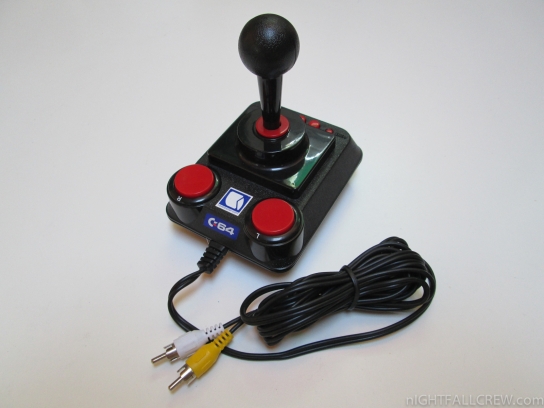
Autopsy:
Here you can see a hack of my dtv (Direct-to-TV).
from Wikipedia:
The C64 Direct-to-TV, called C64DTV for short, is a single-chip implementation of the Commodore 64 computer, contained in a joystick (modeled after the mid 1980s Competition Pro joystick) with 30 built-in games. The design is similar to the Atari Classics 10-in-1 TV Game. The circuitry of the C64DTV was designed by Jeri Ellsworth, a self-taught computer chip designer who had formerly designed the C-One.
Tulip Computers (which had acquired the Commodore brand name in 1997) licensed the rights to Ironstone Partners, which cooperated with DC Studios, Mammoth Toys, and “The Toy:Lobster Company” in the development and marketing of the unit.[1] QVC purchased the entire first production run of 250,000 units and sold 70,000 of them the first day they were offered.
There exist multiple versions of the C64DTV. DTV1 (NTSC television type) comes with 2 MB ROM. It first appeared in late 2004 for the American/Canadian market. DTV2 (called C64D2TV sometimes) is a revised version for the European and world markets (PAL television type) and appeared in late 2005. The ROM has been replaced by flash memory in these devices. However, the DTV2/PAL version suffers from a manufacturing fault, which results in poor colour rendering (the resistors in the R-2R ladder DACs for both the chroma and the luma have been transposed). In the DTV3, a problem with the blitter was fixed. Another DTV variant is the Radio Shack “HUMMER Off-Road Racing Challenge Video Game”.
Hardware Specifications:
Core circuity:
- ASIC running at 32 MHz internally, implementing 6510 CPU, VIC-II, SID, CIA, and PLA
Casing/Connectors:
- Integrated in a Joystick (as if connected to port 2 of a real C64)
- Five additional buttons (acting like keys)
- Running from batteries only (four AA batteries)
- Composite Video, monaural audio (RCA connectors)
- Looks similar to a Competition Pro joystick
Graphics:
- NTSC (DTV2 and later: NTSC/PAL on chip, only PAL wired in end-market devices)
- Reprogrammable palette with 4 bits of luma and 4 bits of chroma
- DTV2 and later: “chunky” 256 color mode, additional blitter for fast image transformation
Sound:
- No support for SID filters
- DTV2 and later: 8 bit digital sound, additional options for envelope generators
Memory:
- DTV1: 128 KB RAM, 2 MB ROM
- DTV2 and later: 2 MB RAM, 2 MB flash memory
- DMA engine for RAM/RAM and ROM/RAM transfers
- DTV2 and later: additional RAM access using bank switching and blitter
CPU:
- Implementing a 6510 at 1 MHz
- DTV2 and later: Enhanced CPU (fast/burst mode, additional registers and opcodes, support for illegal ops of the 6510)
source: wikipedia dtvhacking.retrosafe.com
CompuThink ExpandaMem for Commodore PET & KIM-1
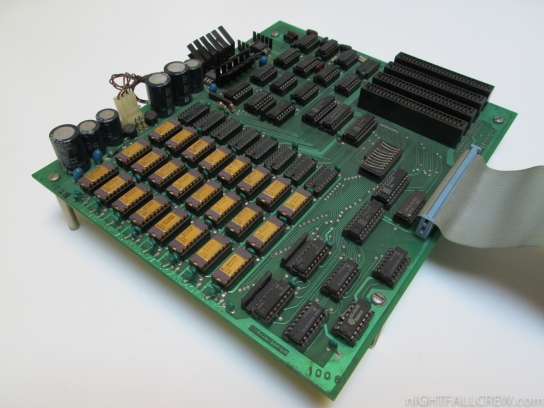
Autopsy:
The Expandamem of CompuThink (Compu/Think) is a Memory expansion card for Commodore PET (chicklet keyboard) and KIM-1.
The memory expansion was installed inside the Computer Commodore PET and with a particular hook was fixed above the motherboard. The connection was through the expansion bus and a power connector.
Download: CompuThink Memory Expansion Manual (1602)
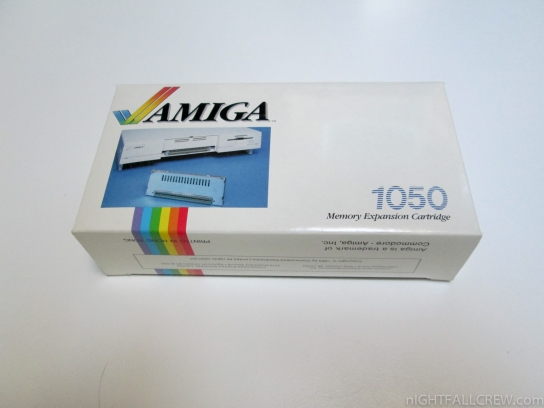


































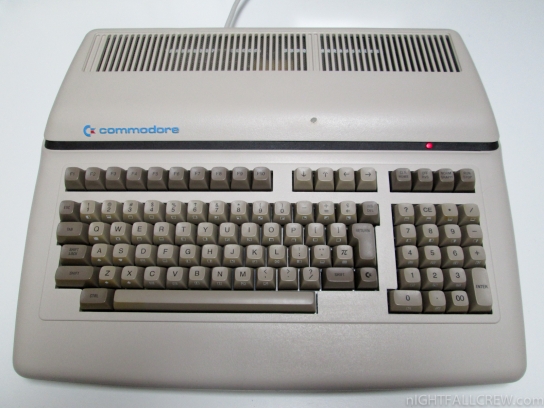





























































































































































Recent Comments